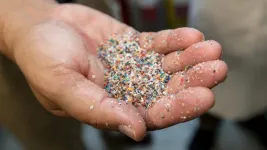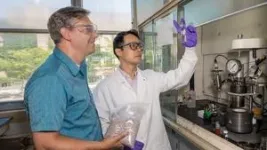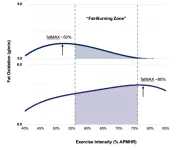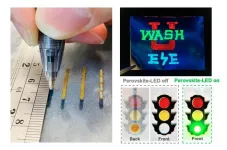(Press-News.org) MADISON – Although many Americans dutifully deposit their plastic trash into the appropriate bins each week, many of those materials, including flexible films, multilayer materials and a lot of colored plastics, are not recyclable using conventional mechanical recycling methods. In the end, only about 9 percent of plastic in the United States is ever reused, often in low-value products. With a new technique, however, University of Wisconsin–Madison chemical engineers are turning low-value waste plastic into high-value products.
The new method, described in the Aug. 11 issue of the journal Science, could increase the economic incentives for plastic recycling and open a door to recycling new types of plastic. The researchers estimate their methods could also reduce greenhouse gas emissions from the conventional production of these industrial chemicals by roughly 60 percent.
The new technique relies on a couple of existing chemical processing techniques. The first is pyrolysis, in which plastics are heated to high temperatures in an oxygen-free environment. The result is pyrolysis oil, a liquid mix of various compounds. Pyrolysis oil contains large amounts of olefins — a class of simple hydrocarbons that are a central building block of today's chemicals and polymers, including various types of polyesters, surfactants, alcohols and carboxylic acids.
In current energy-intensive processes like steam cracking, chemical manufacturers produce olefins by subjecting petroleum to extremely high heat and pressure. In this new process, the UW–Madison team recovers olefins from pyrolysis oil and uses them in a much less energy-intensive chemical process called homogenous hydroformylation catalysis. This process converts olefins into aldehydes, which can then be further reduced into important industrial alcohols.
“These products can be used to make a wide range of materials that are higher value,” says George Huber, a professor of chemical and biological engineering who led the work alongside postdoctoral researcher Houqian Li and PhD student Jiayang Wu.
These higher-value materials include ingredients used to make soaps and cleaners, as well as other more useful polymers.
“We’re really excited about the implications of this technology,” says Huber, who also directs the Department of Energy-funded Center for the Chemical Upcycling of Waste Plastics. “It’s a platform technology to upgrade plastic waste using hydroformylation chemistry.”
The recycling industry could adopt the process soon; in recent years, at least 10 large chemical companies have built or announced plans for facilities to produce pyrolysis oils from waste plastics. Many of them run the pyrolysis oil through steam crackers to produce low-value compounds. The new chemical recycling technique could provide a more sustainable and lucrative way to use those oils.
“Currently, these companies don’t have a really good approach to upgrade the pyrolysis oil,” says Li. “In this case, we can get high-value alcohols worth $1,200 to $6,000 per ton from waste plastics, which are only worth about $100 per ton. In addition, this process uses existing technology and techniques. It’s relatively easy to scale up.”
The study was a collaborative effort across a few different UW–Madison departments, Huber says. Clark Landis, chair of the Department of Chemistry and a world expert on hydroformylation, suggested the possibility of applying the technique to pyrolysis oils. Chemical and biological engineering Professor Manos Mavarikakis used advanced modeling to provide molecular-level insight into the chemical processes. And chemical and biological engineering Professor Victor Zavala provided help analyzing the economics of the technique and the life cycle of the plastic waste.
The next step for the team is to tune the process and better understand what recycled plastics and catalyst combinations produce which final chemical products.
“There are so many different products and so many routes we can pursue with this platform technology,” says Huber. “There’s a huge market for the products we’re making. I think it really could change the plastic recycling industry.”
George Huber is the Richard L. Antoine Professor. Manos Mavrikakis is the Ernest Micek Distinguished Chair, James A. Dumesic Professor and Vilas Distinguished Achievement Professor. Victor Zavala is the Baldovin-DaPra Professor. Other UW–Madison authors include Zhen Jiang and Jiaze Ma.
The authors acknowledge support from the U.S. Department of Energy, Office of Energy Efficiency and Renewable Energy, Bioenergy Technologies Office under Award Number DEEE0009285; The National Energy Research Scientific Computing Center, a DOE Office of Science User Facility supported by the DOE, Office of Science, under contract no. DE-AC02-05CH11231 using NERSC award BES-ERCAP0022773; The Center for Nanoscale Materials, a DOE Office of Science User Facility located at Argonne National Laboratory supported by DOE contract DE-AC02-06CH11357; and the UW–Madison Center for High Throughput Computing supported by UW–Madison, the Advanced Computing Initiative, the Wisconsin Alumni Research Foundation, the Wisconsin Institutes for Discovery, and the National Science Foundation.
# # #
-- Jason Daley, jgdaley@wisc.edu
END
On July 24, 2023, Israel's Parliament sanctioned a substantial amendment to the Basic Law, prompting apprehensions regarding power equilibrium and its potential influence on public well-being. In response, a coalition of prominent Israeli and global public health experts has united to dissect the profound ramifications of this revision in an article titled “Israel's Judicial Overhaul: A Threat to the Health in All Policies Approach” featured in The Lancet.
The amendment, restricts ...
SAN FRANCISCO, Aug. 10, 2023 — Period products come in a variety of styles — liners, pads, tampons, cups and underwear — to help people feel comfortable during a menstrual bleed. But their labels don’t usually list the ingredients, so consumers don’t know what’s in their product of choice. Now, researchers have analyzed over 100 period products for fluorinated compounds, an indicator of potentially harmful per- and polyfluoroalkyl substances, or PFAS. Their results show that while PFAS are absent from many products, ...
Yoga and breathing control practices, in combination with aerobic training, are particularly key exercises for asthmatic people seeking to improve their lung function, a new peer-reviewed study suggests.
The research which is published today in the journal Annals of Medicine highlights the importance of integrating appropriate exercise training into asthma management plans.
The findings demonstrate just how effective specific types of exercise training can be to enhance lung function for those with adults, explains ...
New York, NY [August 10, 2023]—The best heart rate for burning fat differs for each individual and often does not align with the “fat burning zone” on commercial exercise machines, Icahn School of Medicine at Mount Sinai researchers report.
Instead, the researchers said, clinical exercise testing—a diagnostic procedure to measure a person’s physiological response to exercise—may be a more useful tool to help individuals achieve intended fat loss goals. The study, which used a machine learning-based modeling approach, was published online today in Nutrition, Metabolism and Cardiovascular Disease.
“People with a goal of weight or fat loss may ...
A Monash University-led study has proposed a solution for the urgent need to capture real-time data on the impact of climate change-related events on human health, healthcare workforces, and healthcare systems at the point of care.
As the global community faces growing climate challenges, the study calls for action, collaboration, and innovation to safeguard human health and wellbeing in the face of environmental crises.
Published in the Journal of the American Medical Informatics Association, it highlighted key climate ...
(Santa Barbara, Calif.) — Previous research has revealed that the Apolipoprotein-ε4 (APOE-ε4) allele increases the risk for a variety of diseases in aging populations, specifically Alzheimer’s and cardiovascular disease. And yet, despite the negative effects of this genetic variant, it remains prevalent in approximately 20% of the human population. In a quest to determine how this negative allele is surviving natural selection, a group of researchers have discovered that the APOE-ε4 allele is associated with higher fertility in women.
In a new paper released in Science Advances, researchers including UC Santa ...
Researchers at Trinity College Dublin study the factors influencing healthy brain ageing in Latin American and Caribbean (LAC) countries and find the lessons learned there, can also be applied to home.
Ageing is not a uniform process across the globe. Most research into cognitive and functional ageing has been conducted in the US and Europe, in high-income settings. Researchers from the Global Brain Health Institute (GBHI) at Trinity College are filling the knowledge gap that exists for Latin American populations on the factors ...
Key Takeaways
Lung and heart transplant recipients experienced diminished and delayed antibody responses to the first two COVID-19 mRNA vaccine doses, but most developed stronger responses following a third dose
A third dose also boosted cross-protection against SARS-CoV-2 viral variants
For lung and heart transplant recipients, vaccine doses beyond the third dose are likely important for maintaining immunity
BOSTON – Transplant recipients must take life-long immunosuppressive medications to prevent rejection, but these drugs ...
WASHINGTON, D.C. - Today, the U.S. Department of Energy (DOE) announced $11 million in funding for 15 projects in exploratory research for extreme-scale science that will leverage emerging trends and advances in high-end computing, massive datasets, scientific machine learning, artificial intelligence, and novel computing architectures.
“There is a wide expanse of exciting opportunities as we reach beyond exascale computing,” said Ceren Susut, DOE Acting Associate Director of Science for Advanced Scientific Computing Research. “These ...
Researchers working with Chuan Wang, an associate professor of electrical and systems engineering at the McKelvey School of Engineering at Washington University in St. Louis, have developed ink pens that allow individuals to handwrite flexible, stretchable optoelectronic devices on everyday materials including paper, textiles, rubber, plastics and 3D objects.
In a paper published Aug. 7 in Nature Photonics, the team reports their simple and versatile fabrication approach to allow anyone to make a custom light-emitting diode (LED) or photodetector ...





